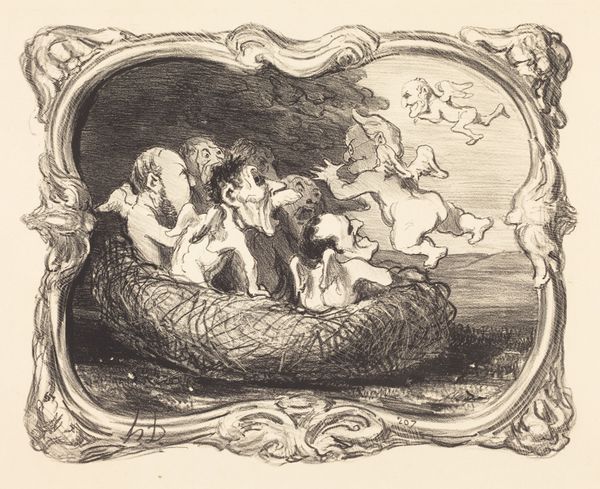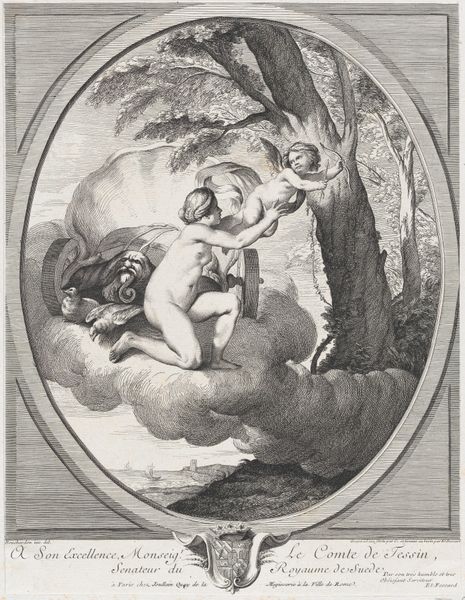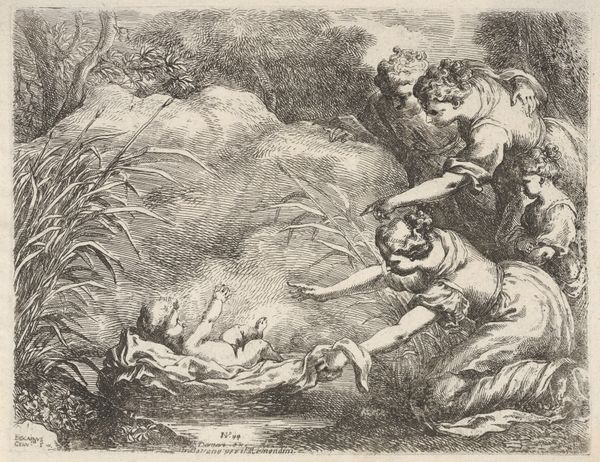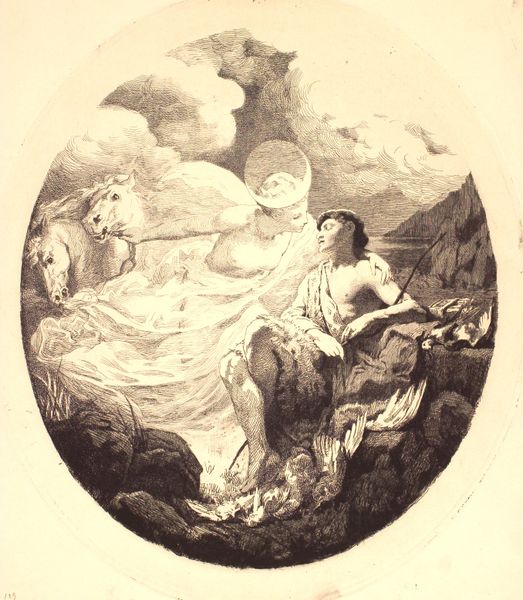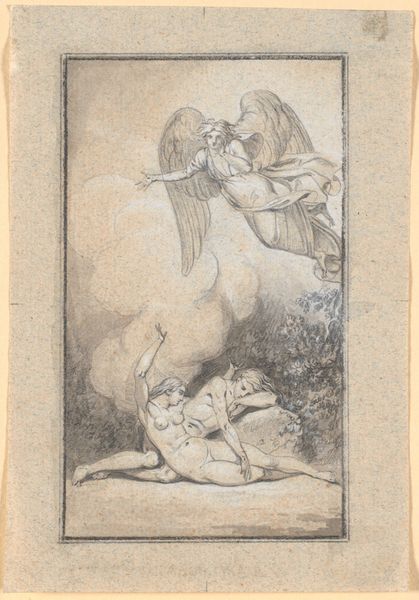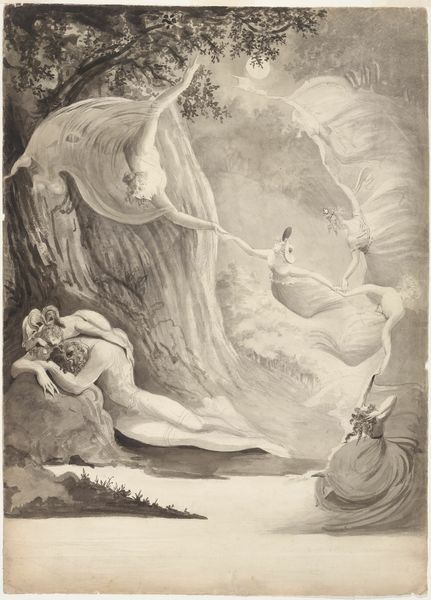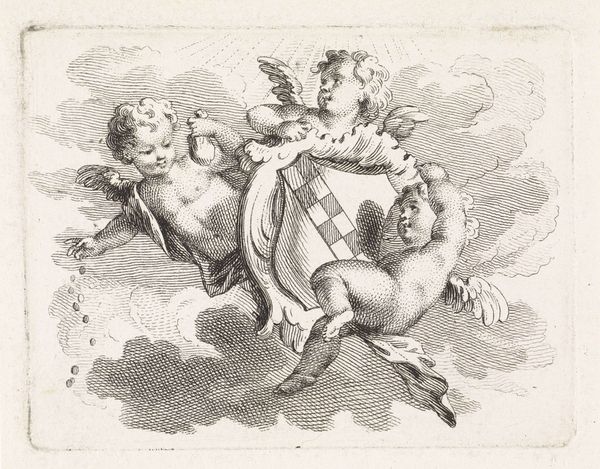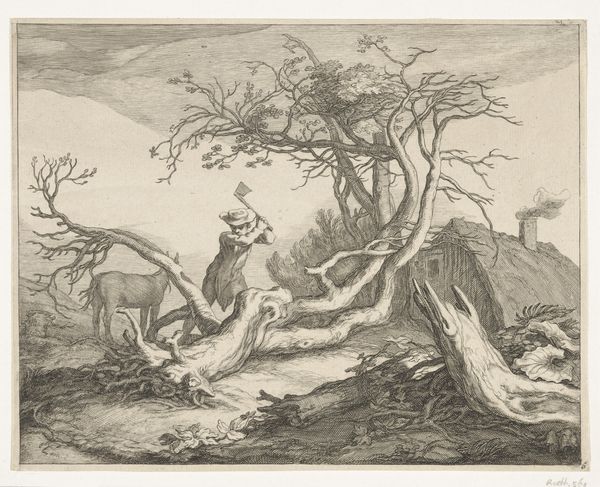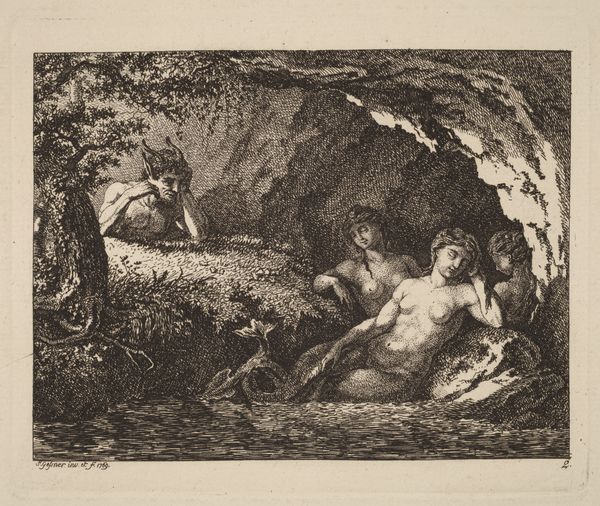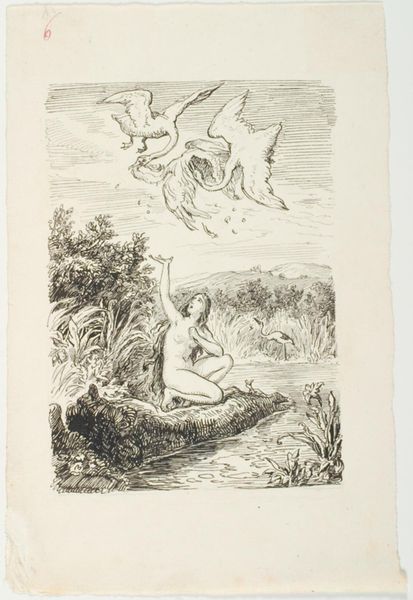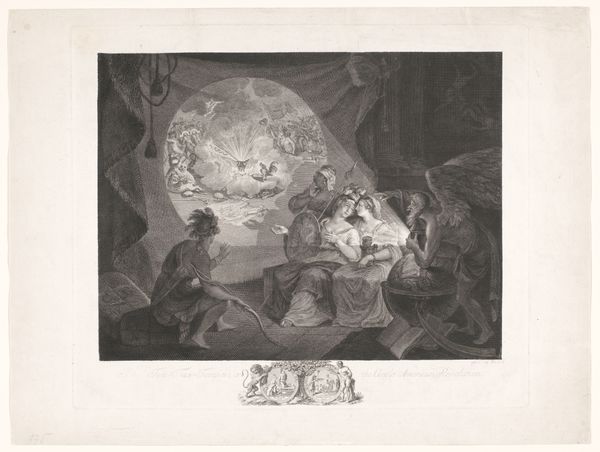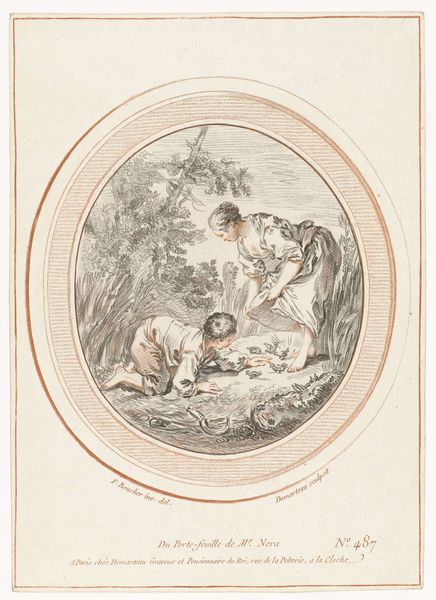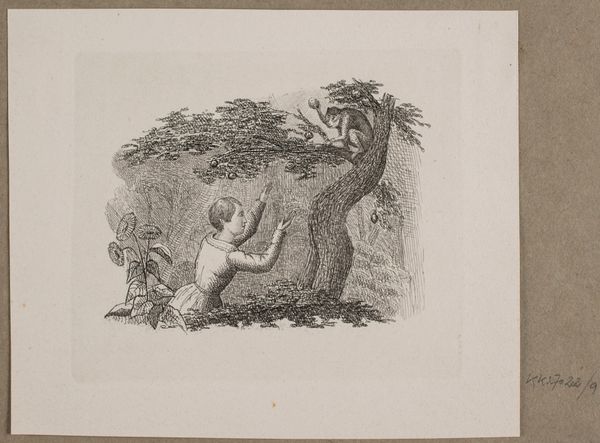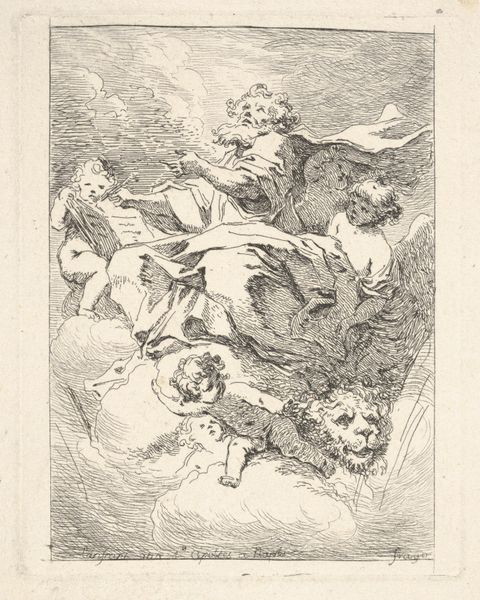
Copyright: National Gallery of Art: CC0 1.0
Curator: Here we have Honoré Daumier’s lithograph, “Le Sommeil d'Endymion-Berryer,” dating to 1851. The scene features the mythological figure Endymion in slumber. Editor: My first impression is the sharp contrast— the smooth, rounded form of Endymion set against the roughly sketched, almost agitated woodland surrounding him. Curator: Daumier's lithographs frequently served as social commentary. Consider how the artist’s choice of romantic, classical themes became vehicles for critique during the Second Republic. This Endymion might be viewed as a lampoon of political figures, specifically one Berryer. Editor: The medium lends itself to reproduction and wide distribution, hinting at how Daumier employed mass production to disseminate caricatures to critique bourgeoisie values of his era. I find the materiality – the directness of the pencil – refreshing in a time of grand Salon painting. Curator: Absolutely. This work speaks to the intersection of mythology and politics. Daumier consistently used classical themes to comment on contemporary issues. The “sleep” motif isn’t just literal; it implies political complacency or blindness. Editor: The print also underscores the democratizing role of graphic arts in political discourse. Consider the relative ease of producing and distributing a lithograph, and what effect that has on disseminating an opinion, compared to a unique, large-scale painting. And beyond the image, the very act of mechanically reproducing images has its own implications for labor and value. Curator: Right, so how would such accessible imagery impact public sentiment during periods of political censorship? Do you see this as an act of resistance? Editor: The figure of Cupid seems more of a caricature than a deity. Daumier emphasizes physical imperfections through the marks he has used on the surface, making sure you have no delusions that this figure might represent ideal beauty, which disrupts traditional artistic standards. Curator: Indeed. I’m also fascinated by Daumier's method of distribution – appearing in journals accessible to a broader segment of Parisian society. It really shifts the reception from an exclusive gallery setting to a more politically engaged audience. Editor: Well, examining Daumier's "Le Sommeil d'Endymion-Berryer" has certainly offered insight into his materials, his context, and what a lithograph says about its period. Curator: Agreed, and hopefully we've given our listeners some avenues for interpreting Daumier's potent blend of myth, politics, and graphic wit.
Comments
No comments
Be the first to comment and join the conversation on the ultimate creative platform.
